
Hiking Around Las Vegas, Desert National Wildlife Refuge

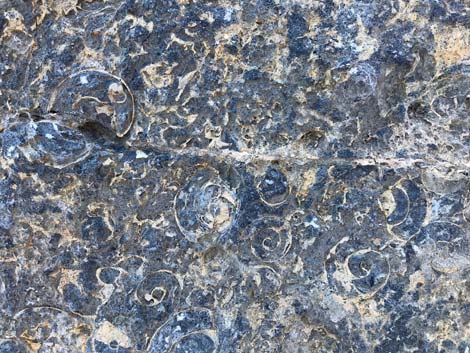 Lots of snail fossils |
Overview There are lots of fossil sites around Las Vegas, most of which are in Paleozoic limestone. These fossils usually are various species of sponges, corals, brachiopods, and crinoids, but occasionally visitors can find snails. The Fossil Ridge Snail Site in Desert National Wildlife Refuge is remarkable due to the dense concentration of snail fossils. The obvious shells are fairly large, generally ranging from about 2-4 inches, but be sure to look carefully at the plethora of smaller fossils and fossil fragments mixed in around the snails, and sometimes even in the snail shells. Look for the small snail fossil inside a larger snail fossil. The stone here is Pogonip Group (Middle Ordovician to Upper Cambrian), dating from the Ordovician (about 471-466 mya). The snail species here are in the genus Palliseria or Maclurites. Look carefully for crinoids and corals too. Link to a map. |
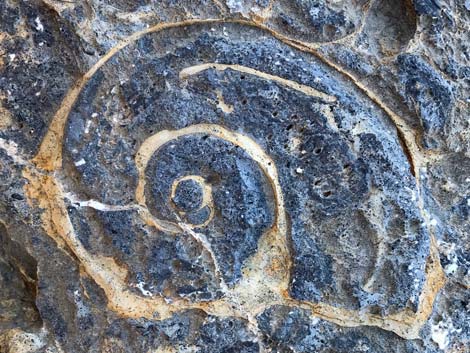 Large snail fossil |
Watch Out Other than the standard warnings about hiking in the desert, ...this is a safe area. Depending on road conditions, the trailhead might be accessible with a 2WD-HC vehicle, but inquire locally or use an AWD or 4WD vehicle just to be sure. In this area, Mormon Well Road can get pretty washboarded. While out, please respect the land and the other people out there, and try to Leave No Trace of your passage. Also, even though this hike is fairly short, it is remote, so be sure to bring the 10 Essentials, even if you leave them in your vehicle. This is a wildlife refuge, so pay extra attention to respecting the land and the wildlife out there. Don't try to chip out the snail fossils. The limestone is very hard, and you'll just make a mess. |
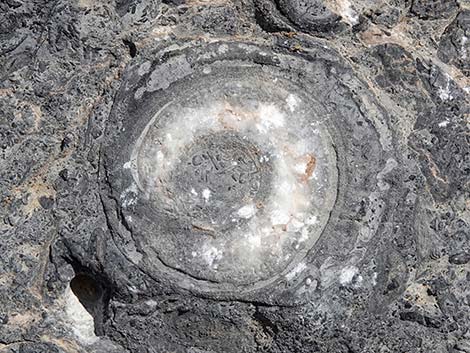 Don't try to chip out the snail fossils; you'll just make a mess. |
Location The Fossil Snail Site is located on Desert National Wildlife Refuge, about 5-1/5 miles east of Corn Creek Visitor Center. From Las Vegas, drive north on Highway 95 passing the turnoffs to Mt. Charleston and the Las Vegas Paiute Indian Reservation (the highway goes under an overpass here). About 6 miles past the overpass, the turnoff to Corn Creek is marked by a brown refuge sign, a Corn Creek Road sign, and a paved road heading east across the desert. Turn right onto Corn Creek Road and drive east to the end of the pavement. At the end of the pavement, turn right onto the graded Mormon Well Road. Drive south and then east of a total of 4.4 miles to a T-intersection with Gass Peak Road. Continue east (straight) on Mormon Well Road for another 1.0 miles to an unmarked parking spot (Table 1, Site 1950) on the right side of the road. Park here, this is the Fossil Snail Site. |
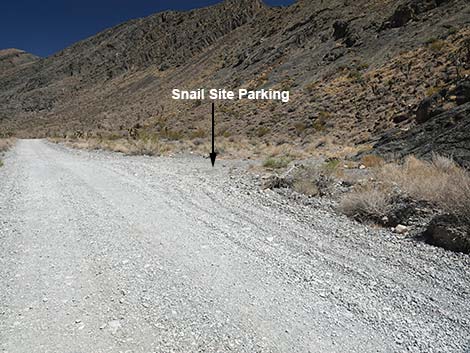 Mormon Well Road approaching Fossil Snail parking (view E) |
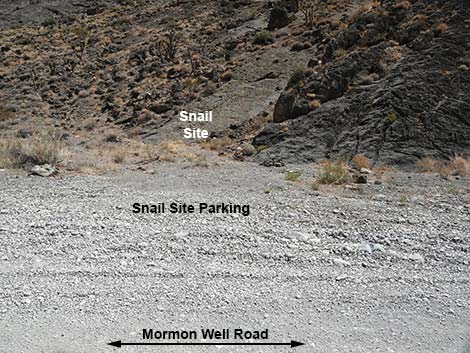 Fossil Snail parking (view S from Mormon Well Road) |
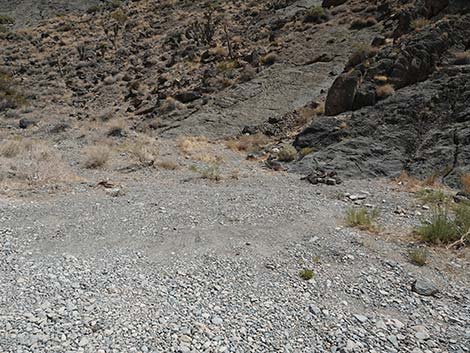 Footpath to the fossil site (view S) |
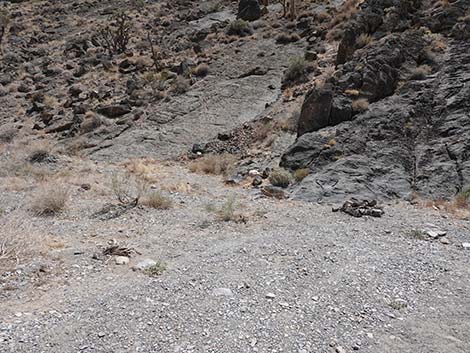 Footpath to the fossil site (view S) |
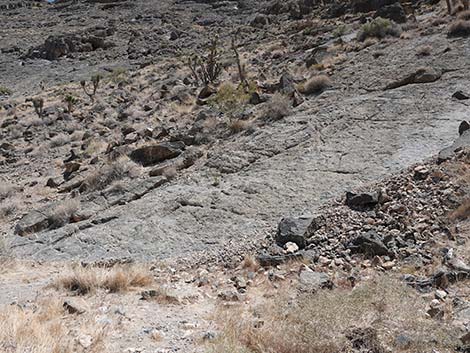 Approaching the fossil site (view S) |
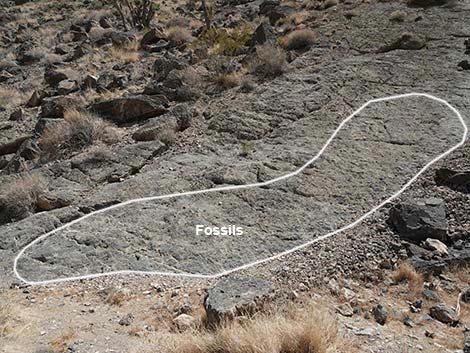 Arriving the fossil site (view S) |
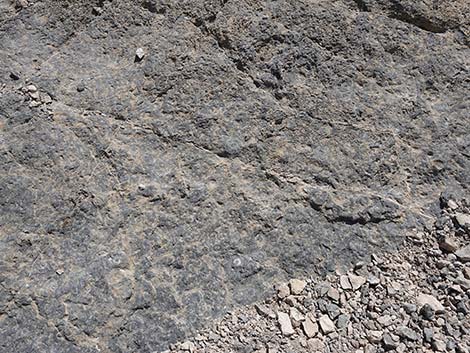 Most fossils are along the bottom of the rock slab |
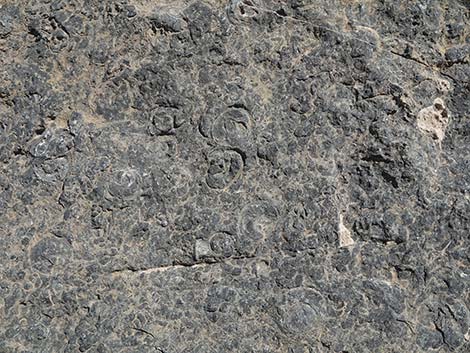 Lots of snail fossils |
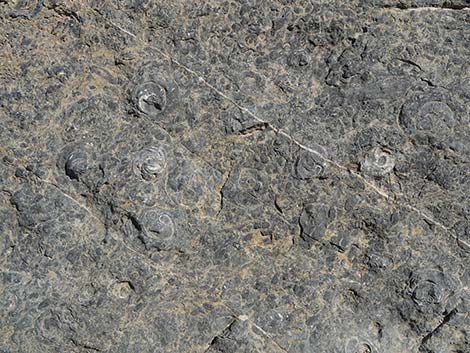 |
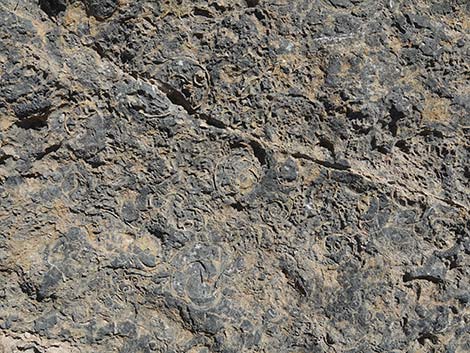 |
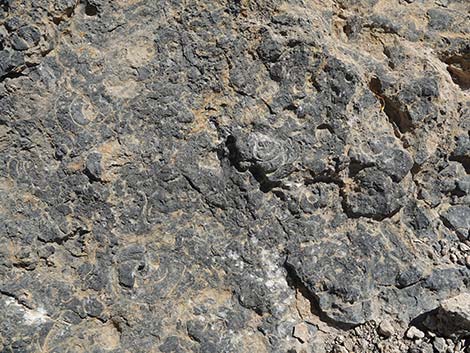 |
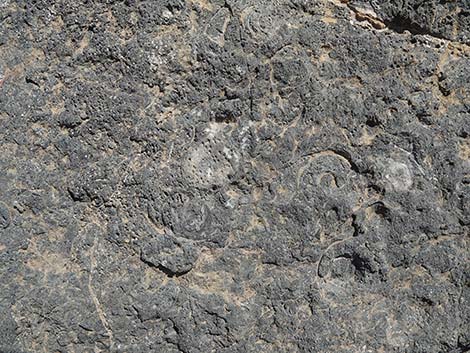 |
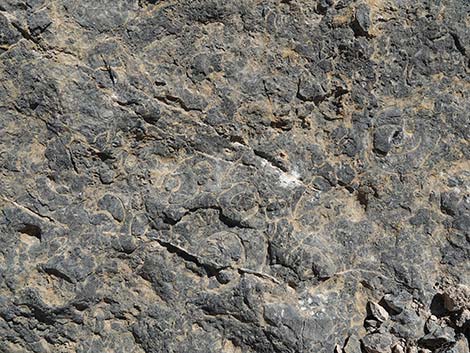 |
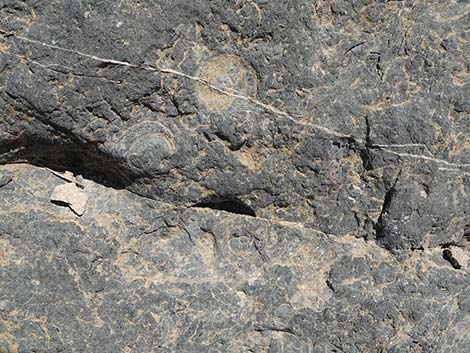 |
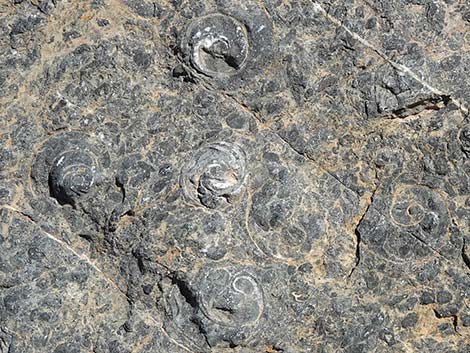 |
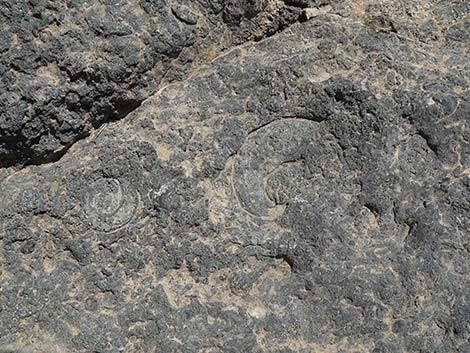 |
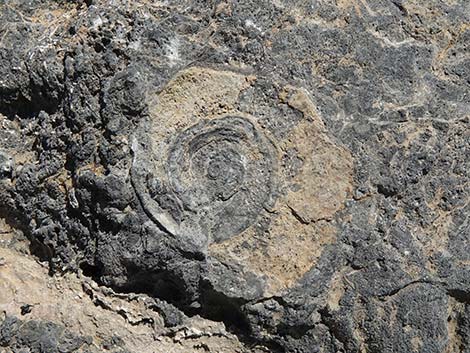 |
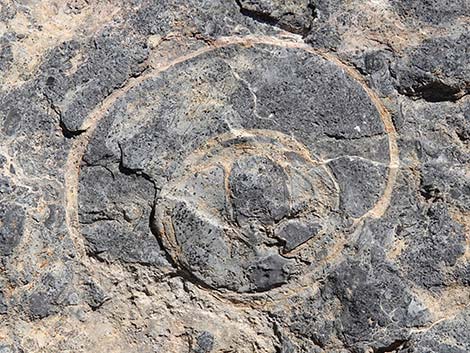 |
 |
 |
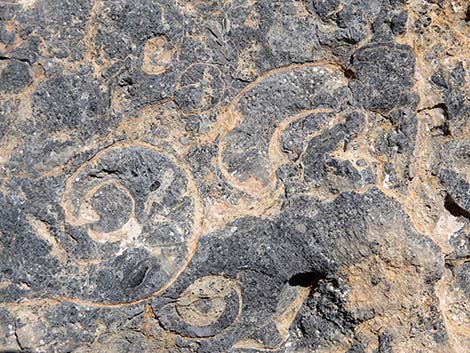 |
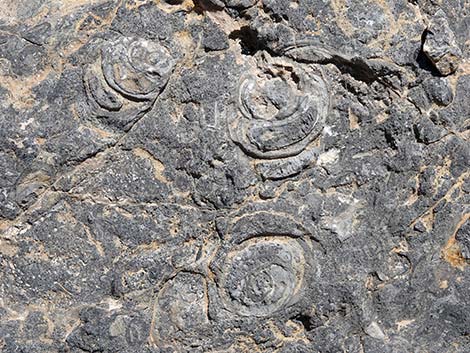 |
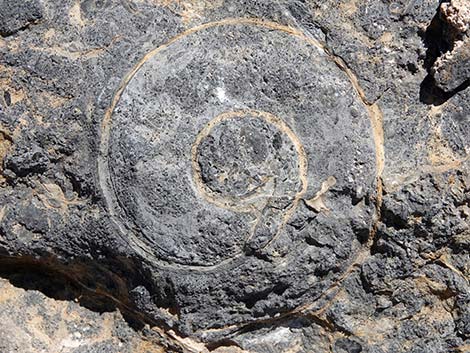 |
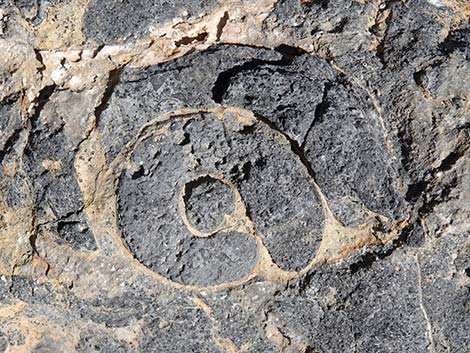 |
Table 1. Hiking Coordinates and Distances based on GPS Data (NAD27; UTM Zone 11S). Download Hiking GPS Waypoints (gpx) file.
| Site | Location | UTM Easting | UTM Northing | Latitude (N) | Longitude (W) | Elevation (ft) |
|---|---|---|---|---|---|---|
| 1950 | Yucca Gap Fossils | 655306 | 4034341 | 36.44356 | 115.26719 | 3,967 |
Happy Hiking! All distances, elevations, and other facts are approximate.
![]() ; Last updated 240324
; Last updated 240324
| Hiking Around DNWR | Hiking Around Las Vegas | Glossary | Copyright, Conditions, Disclaimer | Home |